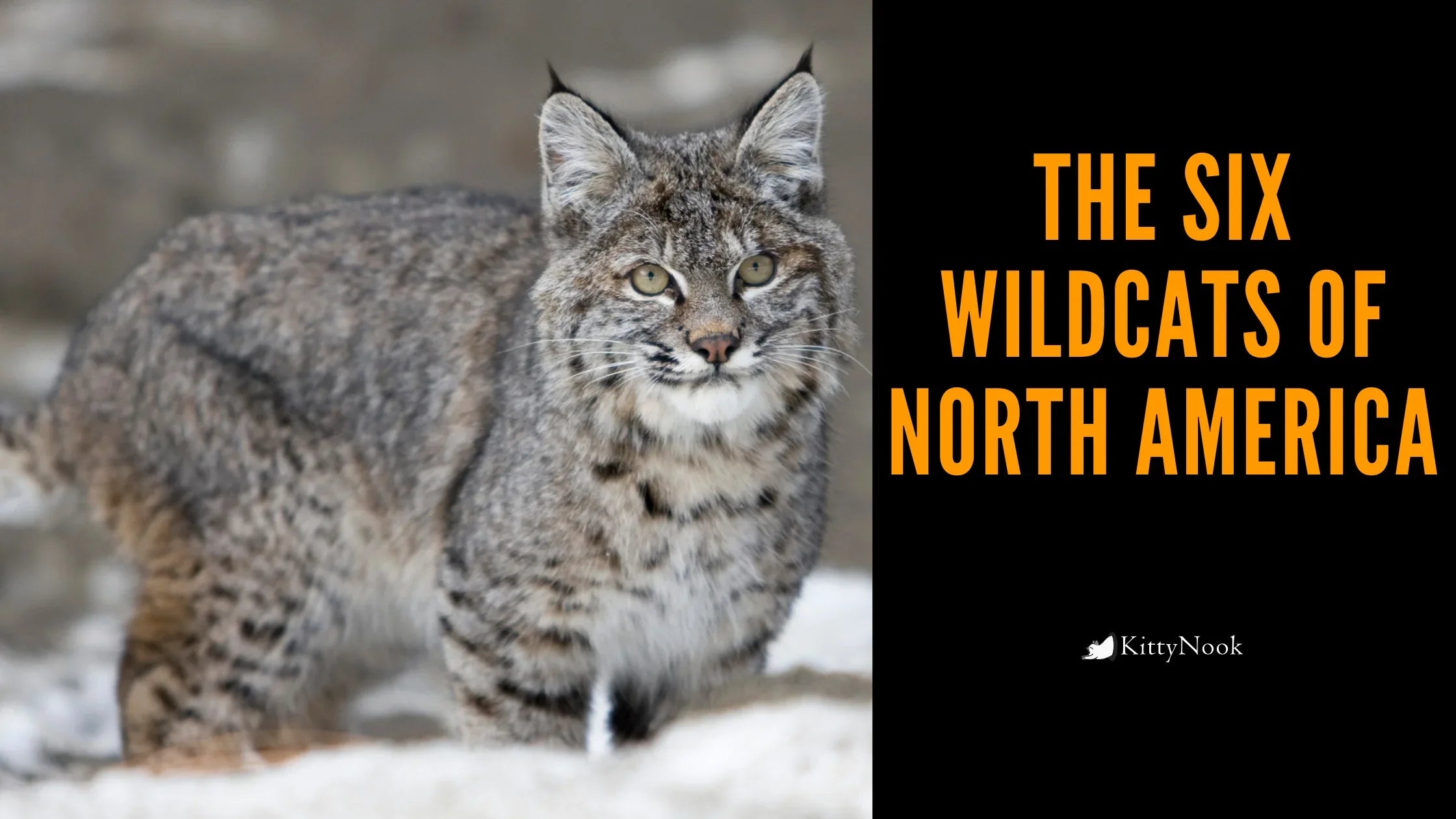The US and Canada are home to six varieties of wildcats. In today's blog, we will learn more about the six wildcats of North America!
1. Canadian Lynx (Lynx canadensis)

Comparable in appearance to a bobcat, the Canadian Lynx has long ear tufts, short, bobbed tail with a completely black tip, large paws, as well as long back legs.
The Canadian Lynx can be primarily found only in northern states along the Canadian border or in hilly regions. It is also not listed, which means that the Canadian Lynx is abundant and has wide varieties.
Fun Fact: The Canada lynx is comparable to our beloved domestic cats in that they can purr, hiss, meow, growl, and even shriek!
2. Bobcat (Lynx rufus)

The Bobcat has big ears, a short tail, brownish fur with black spots. It is an abundant species and can be found all over the United States except for specific parts of the midwest. The bobcat is typically found in woodlands, deserts, hills, swamps as well as farmland.
Like the Canadian Lynx it is also not listed, which implies it is an abundant and wide-variety species.
Fun Fact: Bobcats are extremely clever and have different diets depending upon the food resources near them. North bobcats are also stockier and have thicker coats to endure cold temperatures.
3. Ocelot (Leopardus pardalis)

The Ocelot has light yellow to reddish-grey hair with dark areas, stripes, and rings of dark hair around their tail. Currently, it can only be found in extreme southern Texas.
Fun Fact: Ocelots are born blind. After about a month, their eyes will ultimately open, and they will also start to develop different colors on their fur.
4. Mountain Lion (Puma concolor or Felis concolor)

Mountain Lion cubs have tan to grey bodies and are usually covered with blackish and brownish spots. Male Mountain Lions can grow as much as 8 feet (2.1 meters) and can weigh between 130 and also 150 pounds (59-68 kg). Adult females can grow up to 7 feet (2.4 meters) long and can weigh between 65 and 90 pounds (29-41 kg).
It is the second biggest wild cat in the United States and Canada. It can be found from Canada completely down to South America.
They can be found from coast-to-coast, though mainly in 14 western states and a small endangered population in Florida.
Fun Fact: Mountain Lions are known by many names like cougars, Florida panthers, pumas as well as catamounts.
5. Jaguar (Panthera onca)

Jaguars have a compact body with a yellow and tan coat (although they can also be reddish-brown to black) with solid black spots on the head and back. These spots turn to rosette-shaped patterns along the side and rear of the body.
Jaguars inhabit the Southwestern United States down through Mexico and South America. It is the biggest wild cat in the United States and Canada.
Sadly, Jaguars are almost completely gone in the United States, with one of the last ones being eliminated in Arizona in 2018. It's thought that only a single Jaguar is living in the US.
6. Jaguarundi (Herpailurus yagouaroundi)

The Jaguarundi has an un-spotted, elongated body, smaller, rounded ears, and shorter limbs relative to its body size. They are also considered endangered in the United States.
Fun Fact: Jaguarundis resembles the family Mustelidae (which includes weasels, badgers, otters). This is why early German zoologists to refer to the species as the "weasel feline."
More Fun Facts

- Jaguars are the biggest wild cat in the USA. Adult jaguars can quickly weigh up to 200 pounds, while there have been records of some weighing close to 300 pounds.
- There are 38 species of wild cats that can be found all over the world.
- Six varieties are native to the region: the puma (also described as cougar or mountain lion), bobcat, ocelot, Canadian lynx, jaguar as well as jaguarundi.
- Cougars are found in Washington, Oregon, Nevada, California, Utah, New Mexico, Arizona, Montana, Idaho, Colorado, Wyoming, Nebraska, North Dakota, South Dakota, Florida, and Texas.
- In some cases, Bobcats are described as wildcats and are about twice the size of the ordinary home cat. They're called "bobcats" due to their "bobbed" tail. Their ears, paws, and long legs are pretty comparable to those of the Canadian lynx.





















